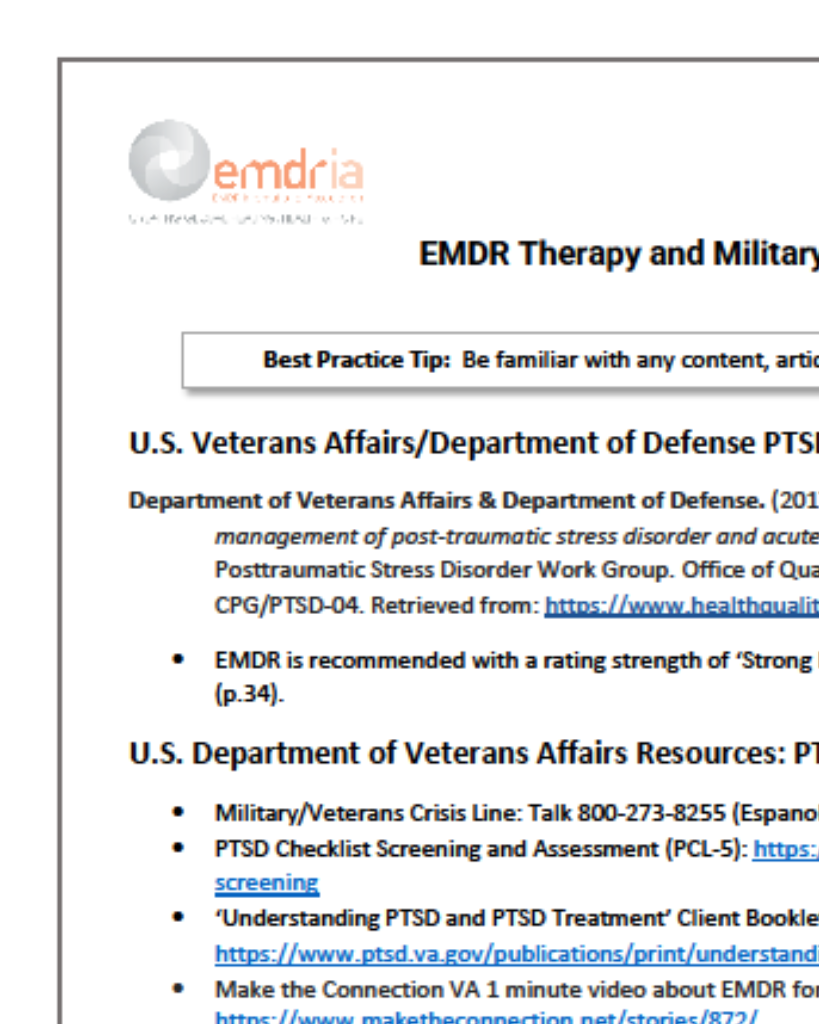Strengths-based and trauma-informed: Using eye movement desensitization and reprocessing to promote posttraumatic growth
This article aims to combine a strengths-based perspective with trauma-informed practice.
Article Abstract
“Over the past 25 years, there has been a shift from a singularly deficit-oriented view of trauma reactions to one that is more inclusive and includes a focus on posttraumatic growth (PTG). Consistent with a strengths-based approach, mental health professionals must attend to the positive reactions that trauma survivors can experience. Research is clear on the importance of PTG, though there is a gap in the literature regarding how to incorporate PTG in therapeutic settings. This article aims to combine a strengths-based perspective with trauma-informed practice. Therefore, the purpose of this article is to provide a conceptual framework of how to apply a trauma-informed treatment protocol in a clinical setting to facilitate PTG. The authors describe eye movement desensitization and reprocessing based on its protocols that uniquely support the growth process. We believe that clinicians must understand the potential benefits that individuals may experience and apply that knowledge to existing trauma-informed treatments to fully encapsulate the spectrum of posttrauma reactions to most effectively guide individuals in their trauma recovery.”
—Description from publisher
Article Access
Paid/Subscription Access
Poandl, M. M., & Gutierrez, D. (2024). Strengths-based and trauma-informed: Using eye movement desensitization and reprocessing to promote posttraumatic growth. Traumatology, Online. https://doi.org/10.1037/trm0000527
Date
September 9, 2024
Creator(s)
Margaret M. Poandl, Daniel Gutierrez
Practice & Methods
Resilience
Publisher
Green Cross Academy of Traumatology
APA Citation
Poandl, M. M., & Gutierrez, D. (2024). Strengths-based and trauma-informed: Using eye movement desensitization and reprocessing to promote posttraumatic growth. Traumatology, Online. https://doi.org/10.1037/trm0000527
Audience
EMDR Therapists
Language
English
Content Type
Article, Peer-Reviewed
Access Type
External Resource





